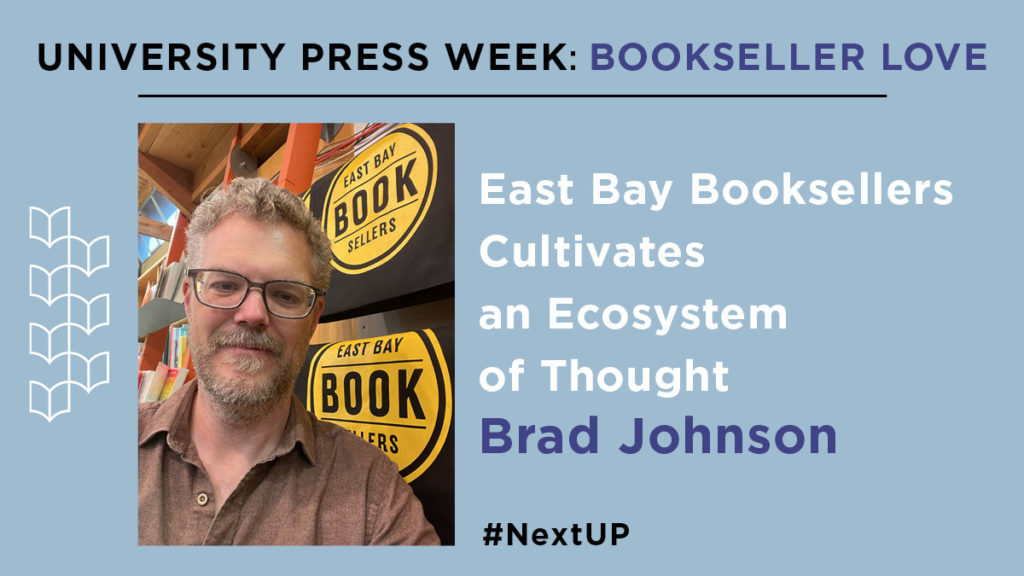East Bay Booksellers Cultivates an Ecosystem of Thought
Brad Johnson

Bookselling in the late twenty-first century is, and must be, more than simply the sum of its constituent words. It isn’t a trade secret that books can be purchased for cheaper beyond my store. I can rage against that reality, which I often do, or I can reaffirm something more central to what I do: the (not-strictly) monetary value of curiosity.
The reason I feature academic presses so centrally at East Bay Booksellers is that institutions like Columbia University Press tend to wide and fertile fields of curiosity, which often cross-pollinate other fields. I’ve described the citations in academic books as a root system, which we now know feeds not only the single plant but communicates with an entire ecosystem. In this case, an ecosystem of thought.
My challenge for readers is to not get hung up on the details necessarily, but to instead trace how an idea or argument emerges.
A hallmark of academic books, and why a casual reader might find them initially intimidating, is that they “show their work.” This demonstration is often when jargon or technical language comes in. My challenge for readers is to not get hung up on the details necessarily, but to instead trace how an idea or argument emerges. The rest will accumulate in your brain if and as it will. But just as I don’t need to, say, be an architect to look at a Frank Gehry house and truly marvel its artistry, I don’t need to be a specialist to follow what an academic book is trying to do.
It does take patience, though, which is another thing I love about academic books. There’s a reason why much of what we sell at bookstores is said to come from “trade presses”: they are mostly goods to be traded for cash and consumed.[1] I don’t mean this strictly as a criticism. Some of our enduring classics—the works that continue to enrich and challenge readers—are trade goods that defy being simply just that. While most academic presses these days have a trade division, their anticipated sales are in service to a non-trade institutional mission rather than profit. This arguably makes some of their books difficult to become works of art (by my definition). What they can do, however, is help train a reader’s senses and attention for artistry.
What they can do, however, is help train a reader’s senses and attention for artistry.
The rewards of reading books from academic presses can also be immediate. The best ones are passion projects that emerged from somebody else’s passion project, and so on. I know we try to avoid this word these days, but curiosity is infectious! Plus, reading an academic book you love will almost inevitably build your “to read next” pile. It has certainly grown the sections of my bookstore to bursting.
At East Bay Booksellers, we recently started an academic book subscription service called The Syllabus. My aim is to introduce more general readers to the joys of reading books like these. Each quarter we introduce a broad topic—e.g., currently, it is “The Aesthetics of the Self: Self-Creation as an Act of Deception”—and send subscribers a book pertaining to that topic. So far, it’s been fun, and we’ve been excited by the reception. Academic presses are churning out such good stuff, we felt we should get creative about making sure these fine books find their readers, even when the reader isn’t expecting it.




